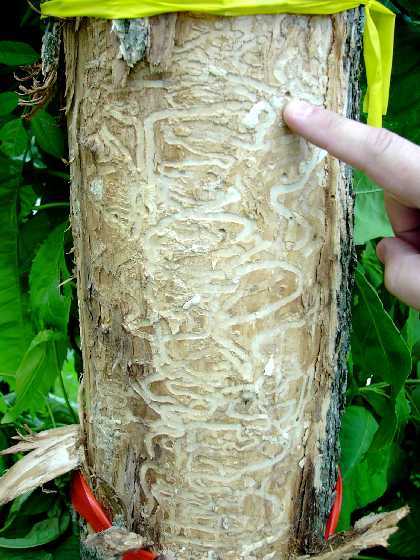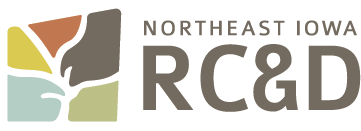
 An extensive tree inventory will help to assess the risk the emerald ash borer may pose to communities in the three counties.
An extensive tree inventory will help to assess the risk the emerald ash borer may pose to communities in the three counties.
In May, 2010, the emerald ash borer, the invasive insect from eastern Asia that kills ash trees, was found on an island on the Iowa side of the Mississippi River near New Albin by the Iowa Emerald Ash Borer Team.
The Iowa Emerald Ash Borer Team includes officials from the Iowa Department of Agriculture and Land Stewardship, Iowa State University Extension, the Iowa Department of Natural Resources (DNR), USDA Animal Plant Health Inspection Service (APHIS), and the USDA Forest Service.
The emerald ash borer attacks and kills all ash trees (Fraxinus species) by larval burrowing under the bark and eating the actively growing cambium layers. No 100-percent effective control measures are currently available. Because of this, emerald ash borer is the most serious threat to Iowa’s native forest and urban tree population since Dutch elm disease.
An important component of Iowa’s effort to prevent the spread of the invasive pest is preparing Iowa communities to respond quickly and effectively if the pest is discovered in the community. A grant from the USDA Forest Service allowed the DNR to work with communities that have a population under 5,000 in 12 eastern Iowa counties. The grant provided funding to conduct community boulevard tree inventories and to create comprehensive management plans. The management plans focus on the importance of boulevard trees, overall forest health of boulevard trees, management cycles, tree risk mitigation and suggestions on how to manage the urban ash tree populations. Regional meetings were held to answer questions from the communities that received management plans.
In partnership with DNR Forestry, NE IA RC&D Forestry Outreach Coordinator Richard Kittelson inventoried all boulevard trees in the three county’s communities under 5000 population. Only publicly owned boulevard trees were inventoried and evaluated, no private trees were included. Kittelson contacted each community’s officials before beginning work.
Another grant from the Forest Service allowed the DNR to develop a resource kit to assist in the battle with the invader. The kit is available online at www.iowadnr.gov, then click on the EAB Resource Kit heading in the column on the right side of the page. The EAB resource kit will allow communities to estimate the cost to remove the ash trees and has information on where those trees can be processed. The kit also includes basic identification information and has a list of consulting foresters and tree treatment options.
Additional information about emerald ash borer and current monitoring efforts can be found at the following websites:


